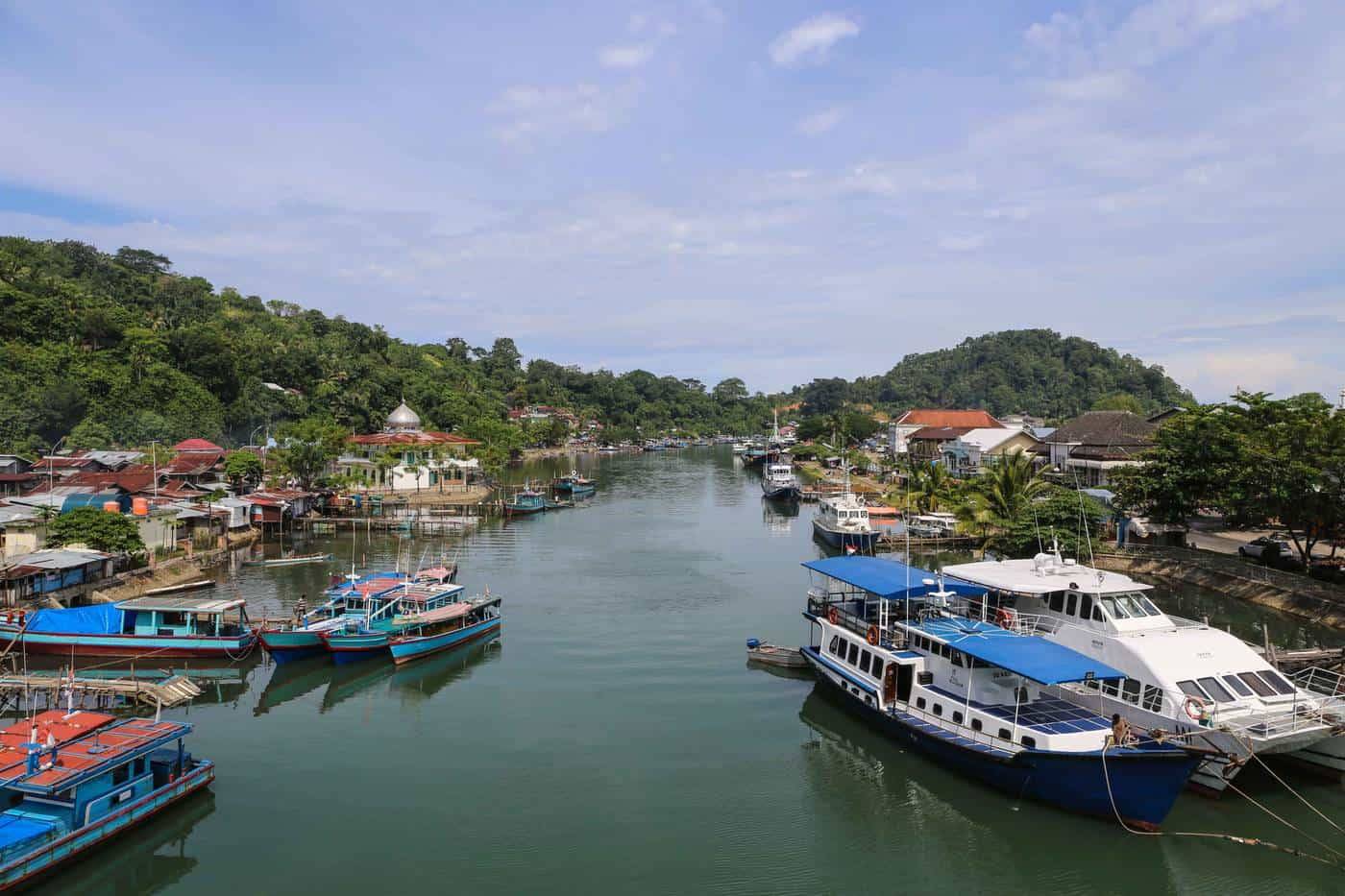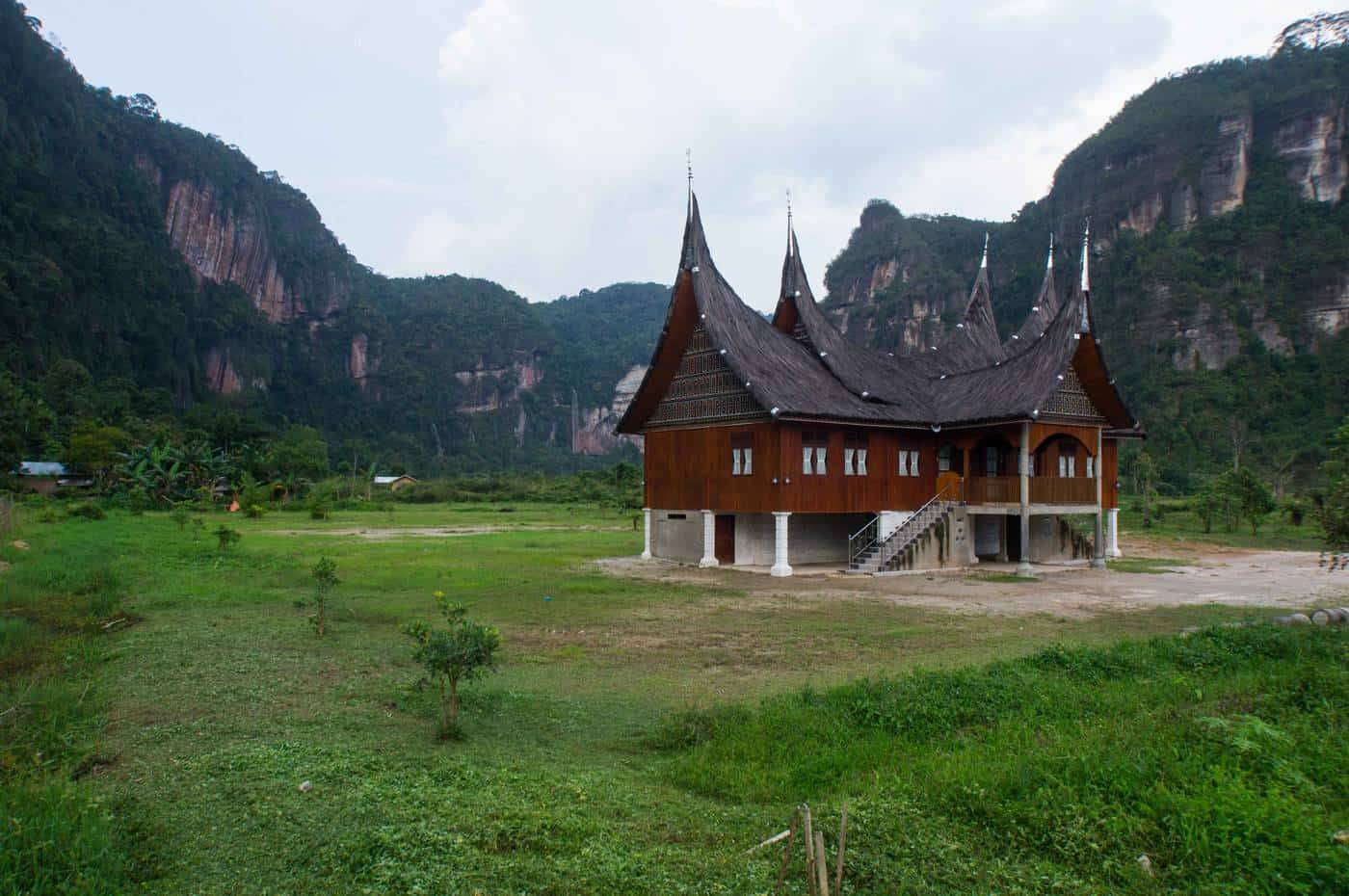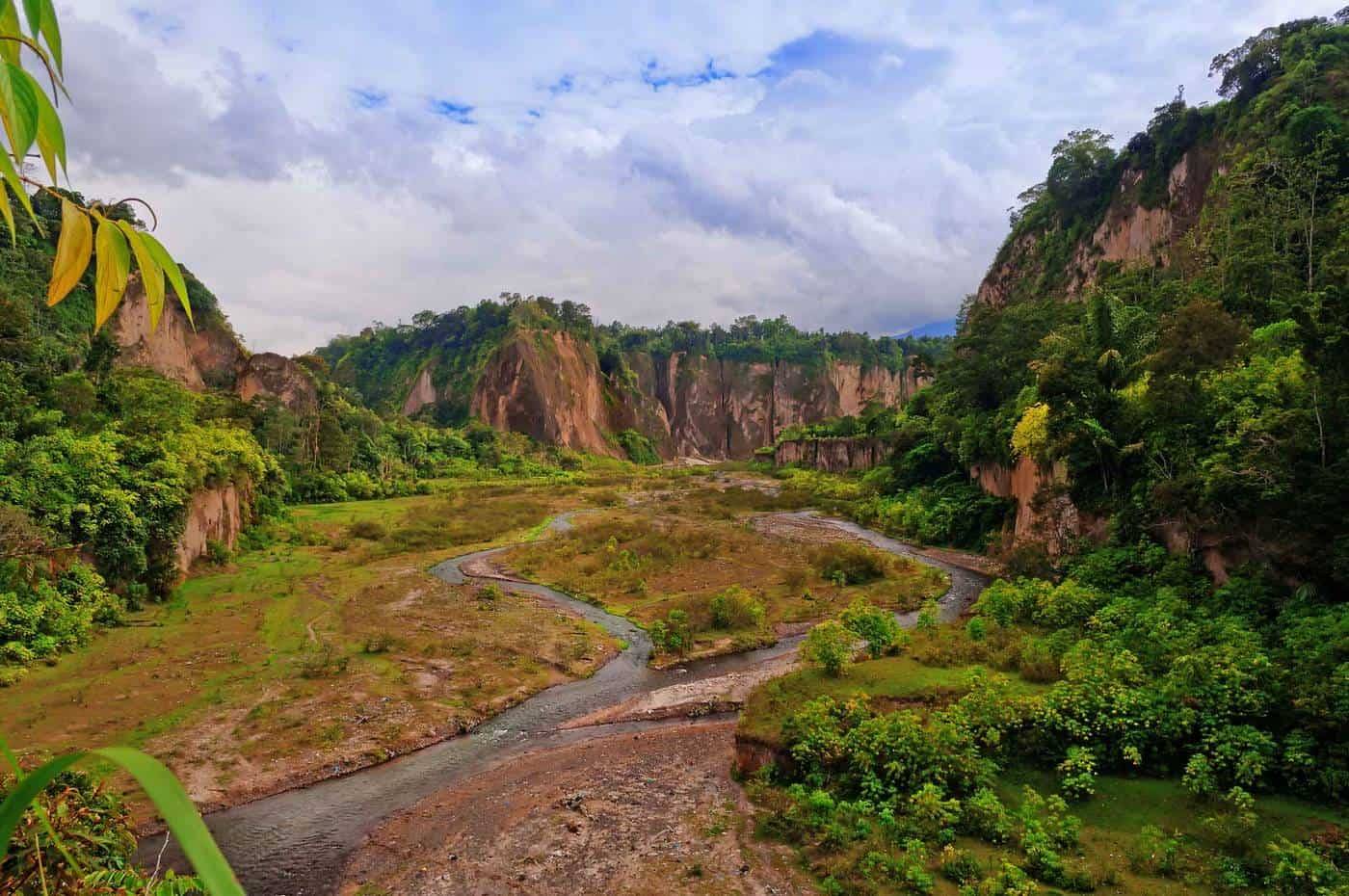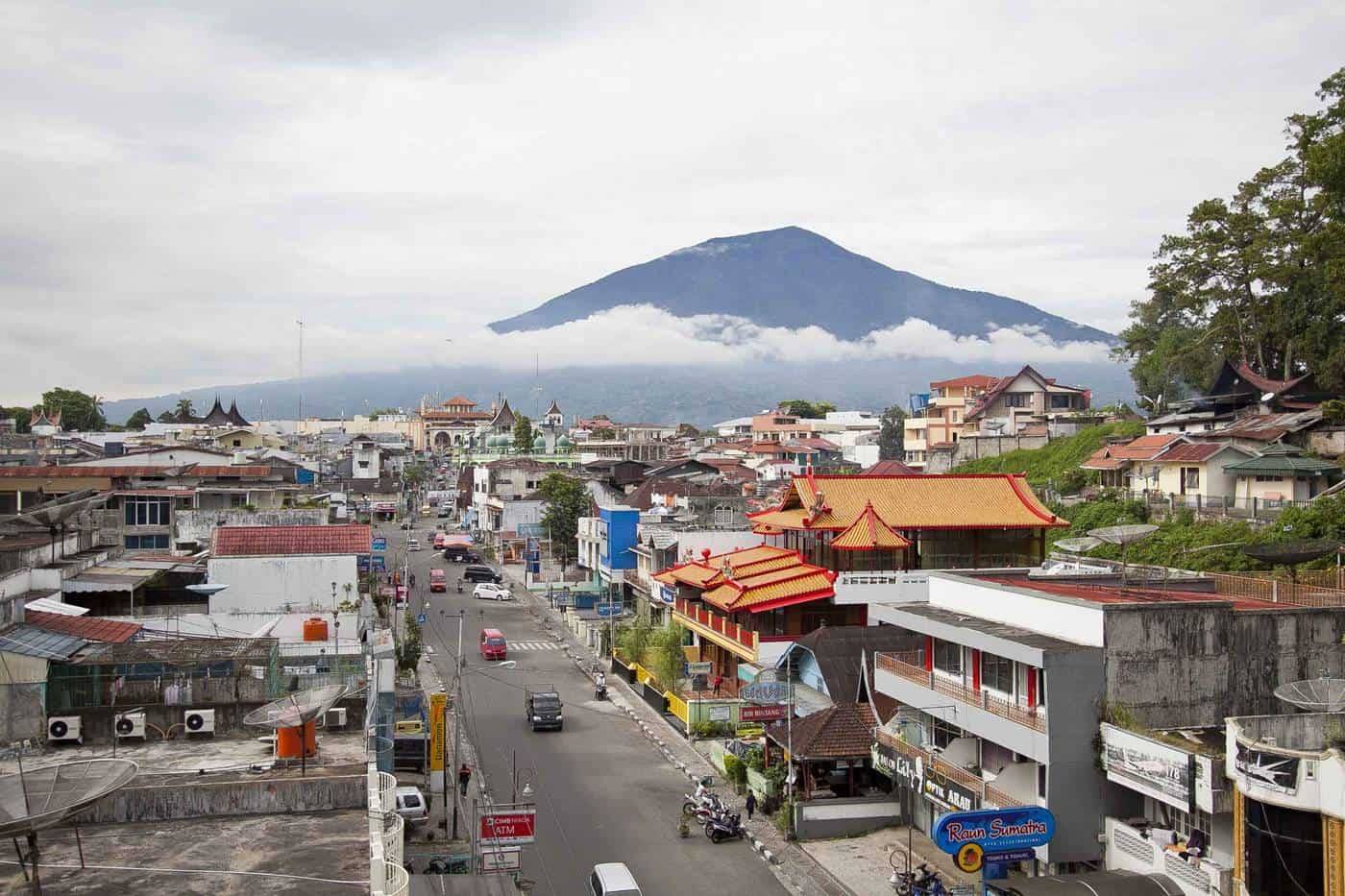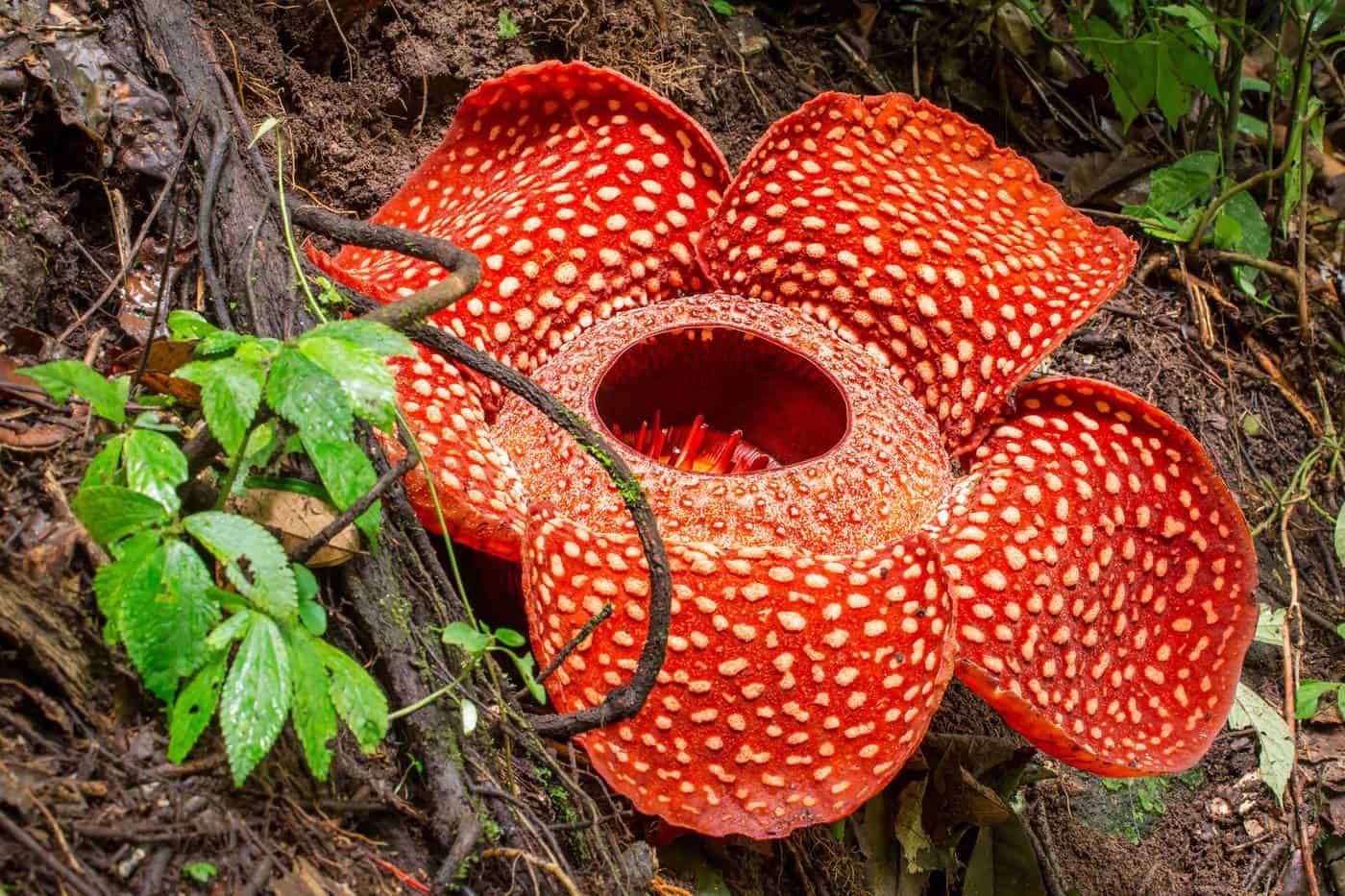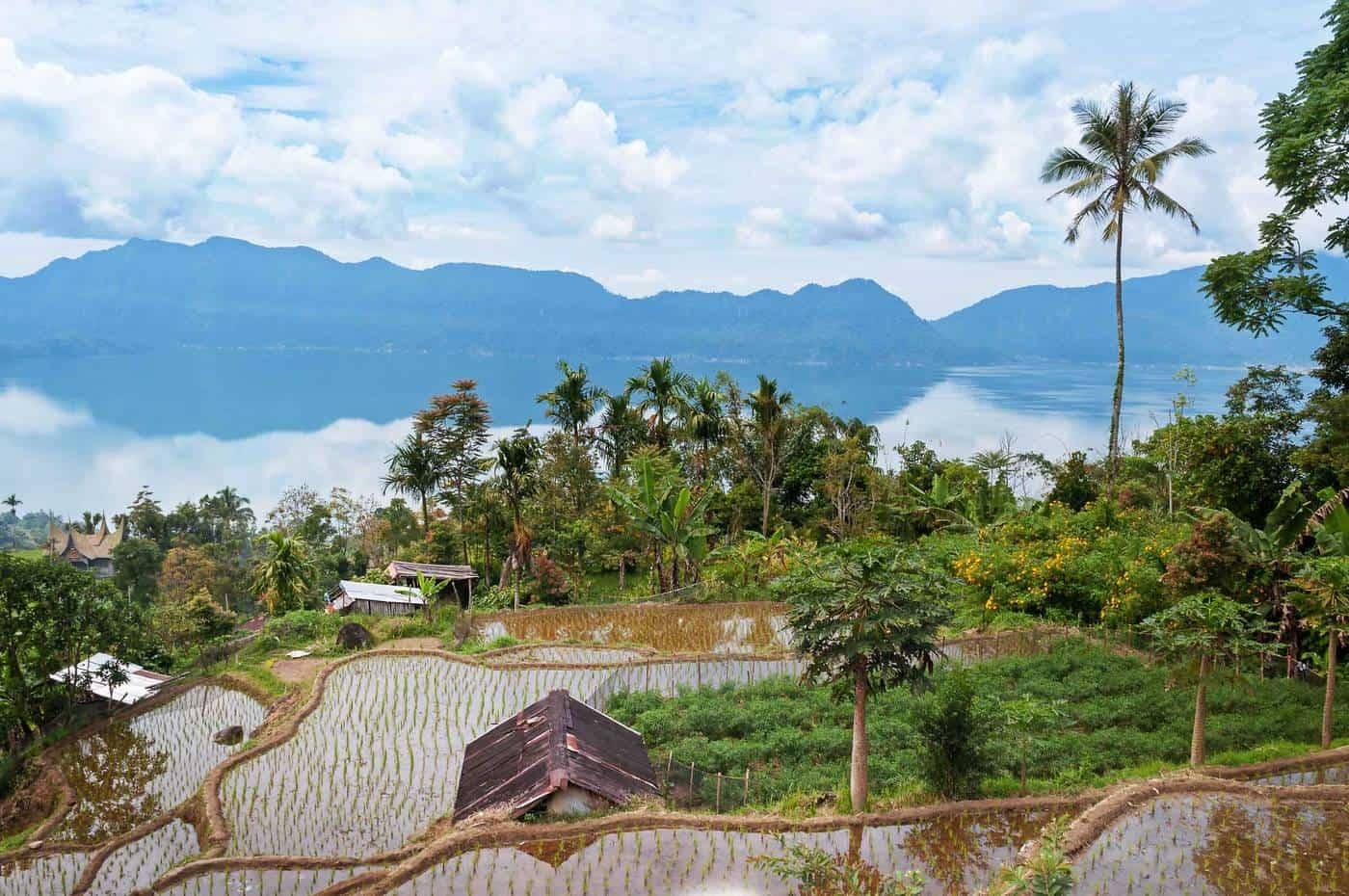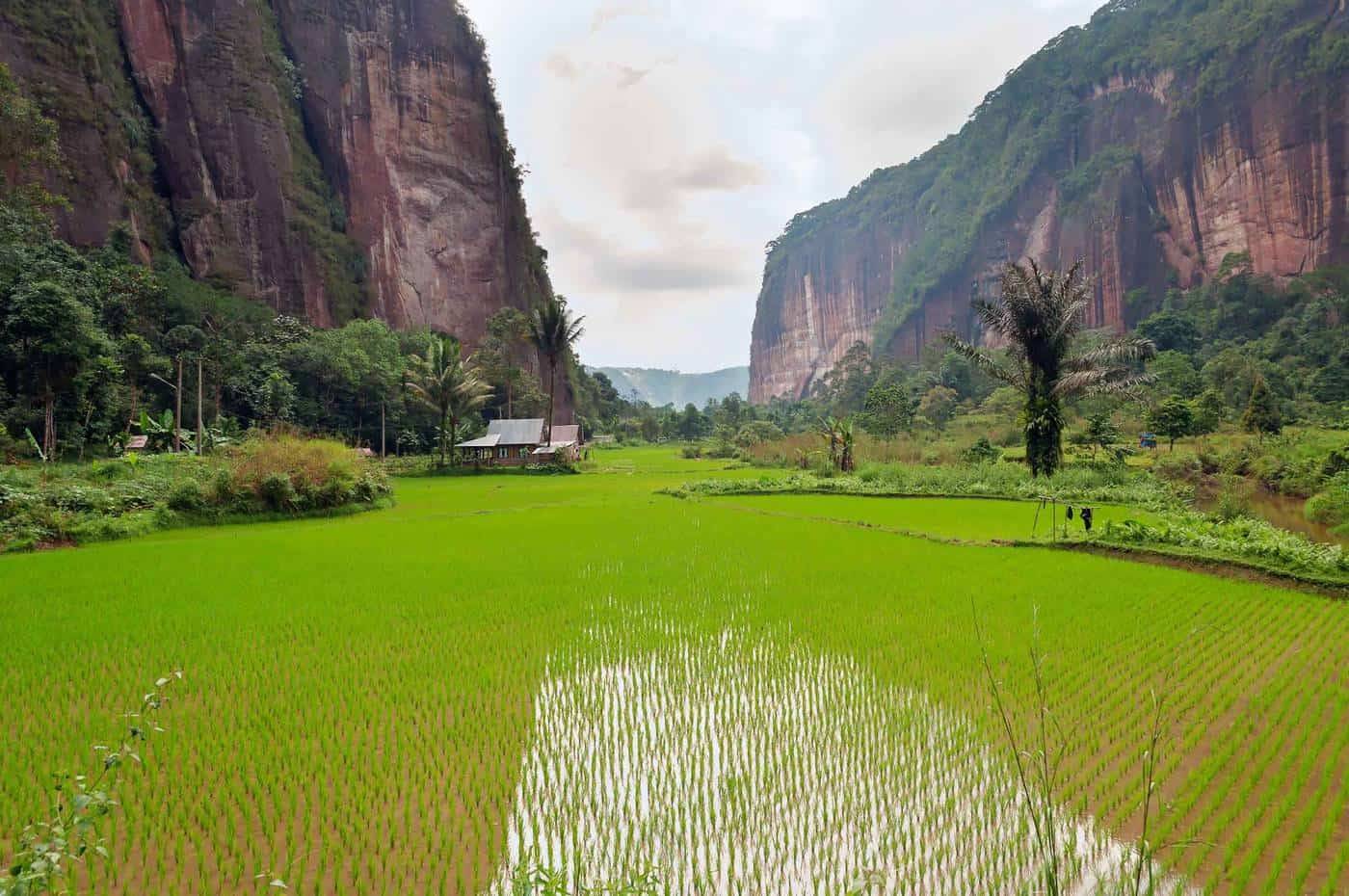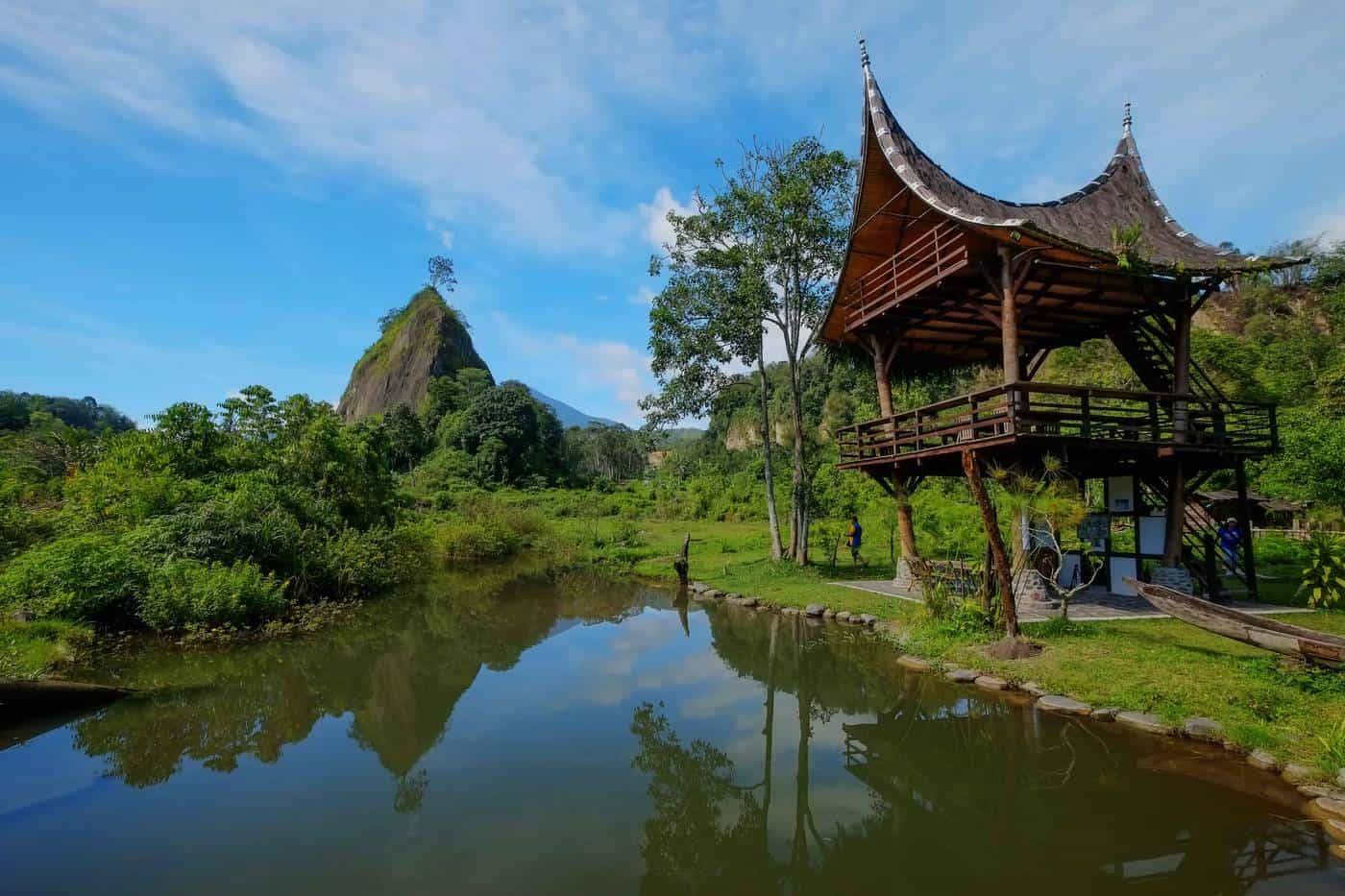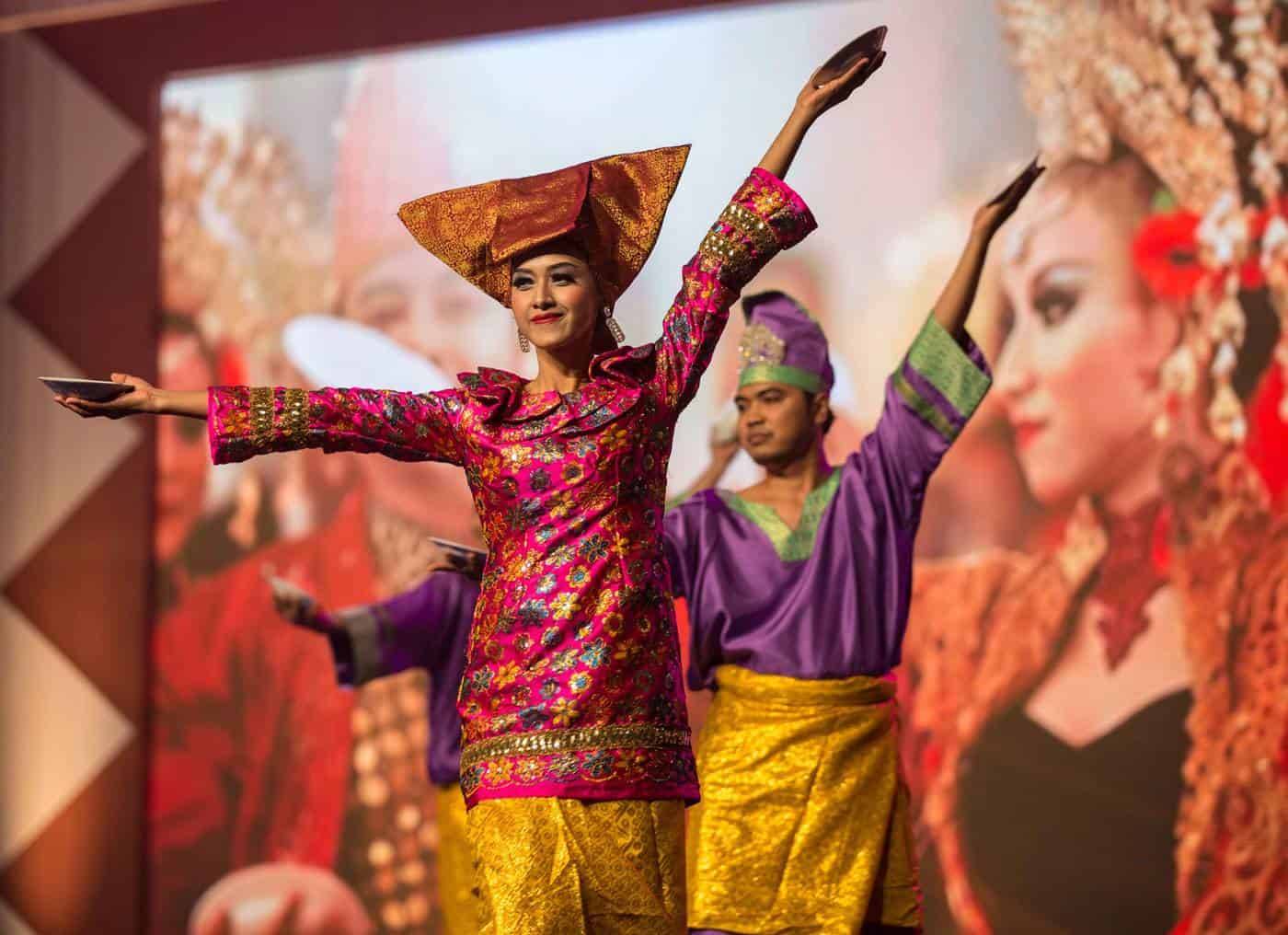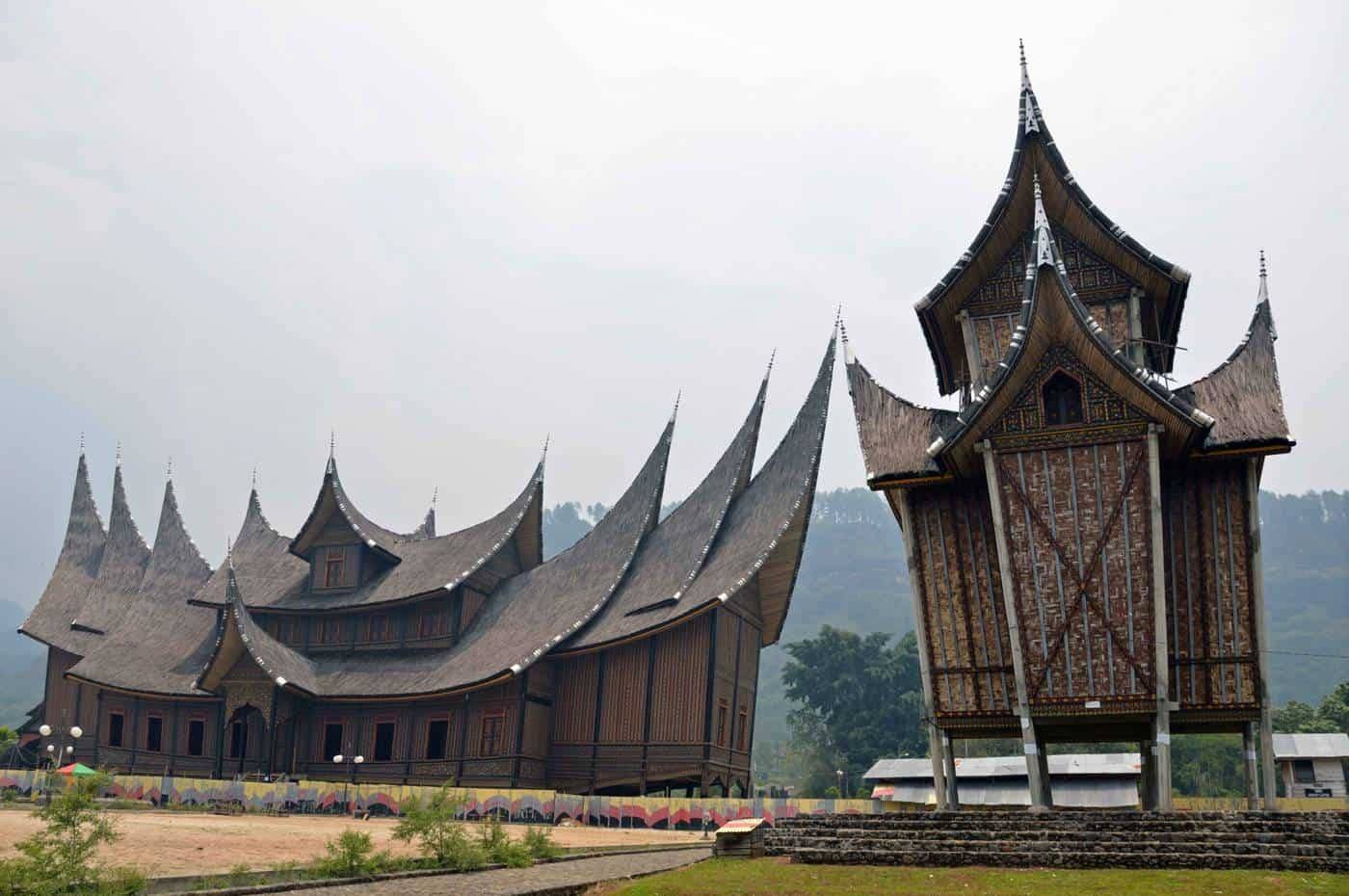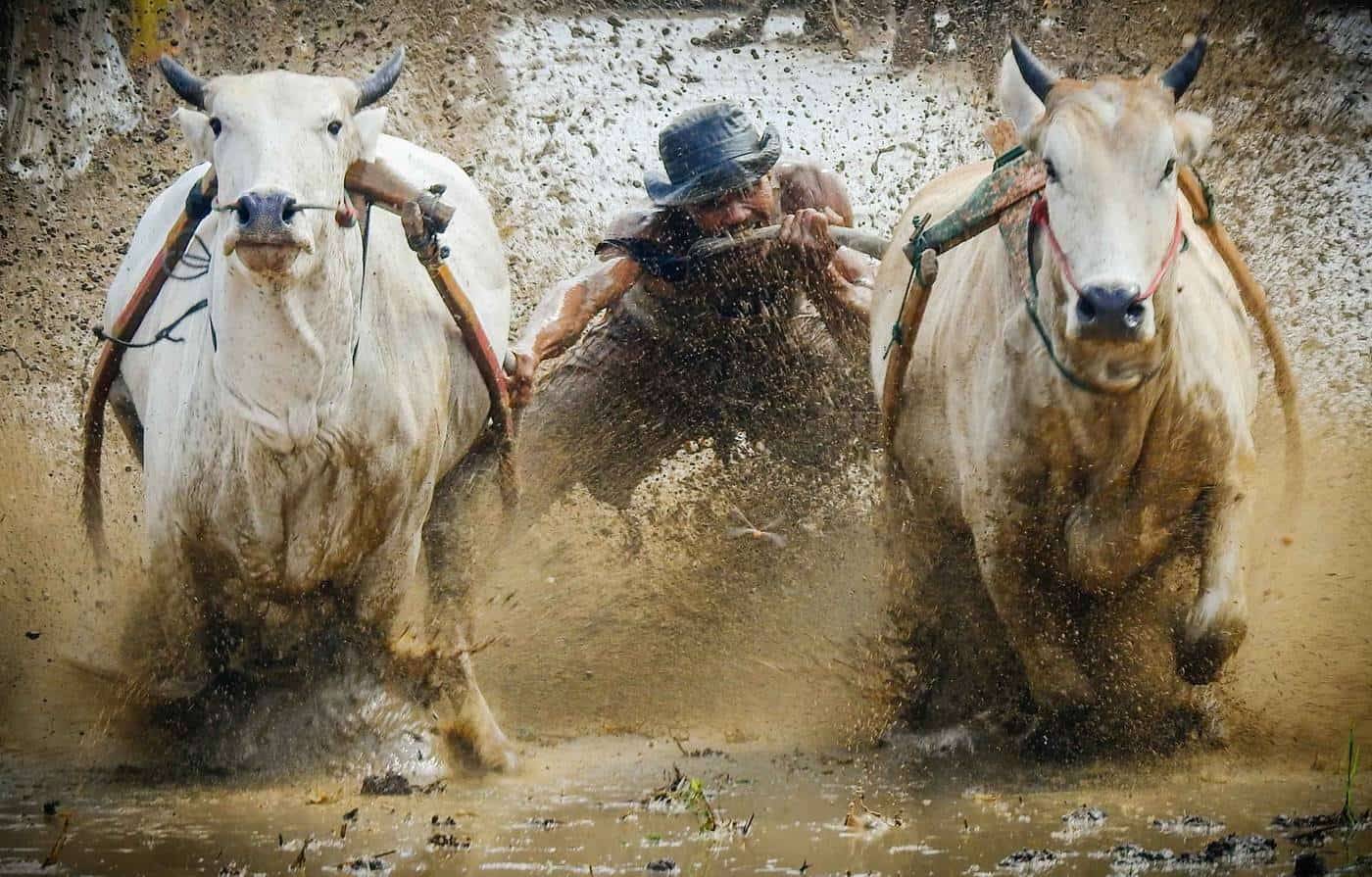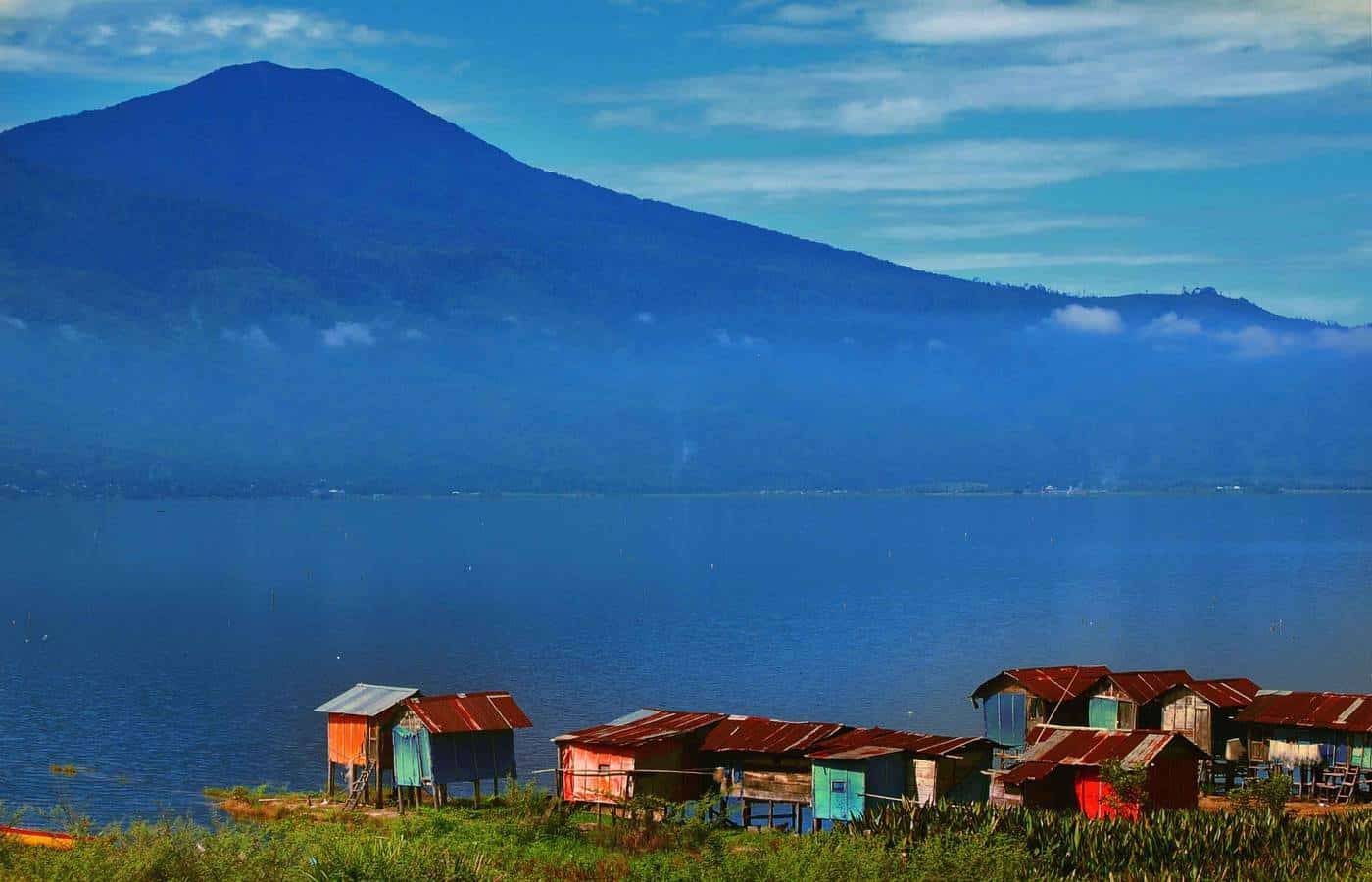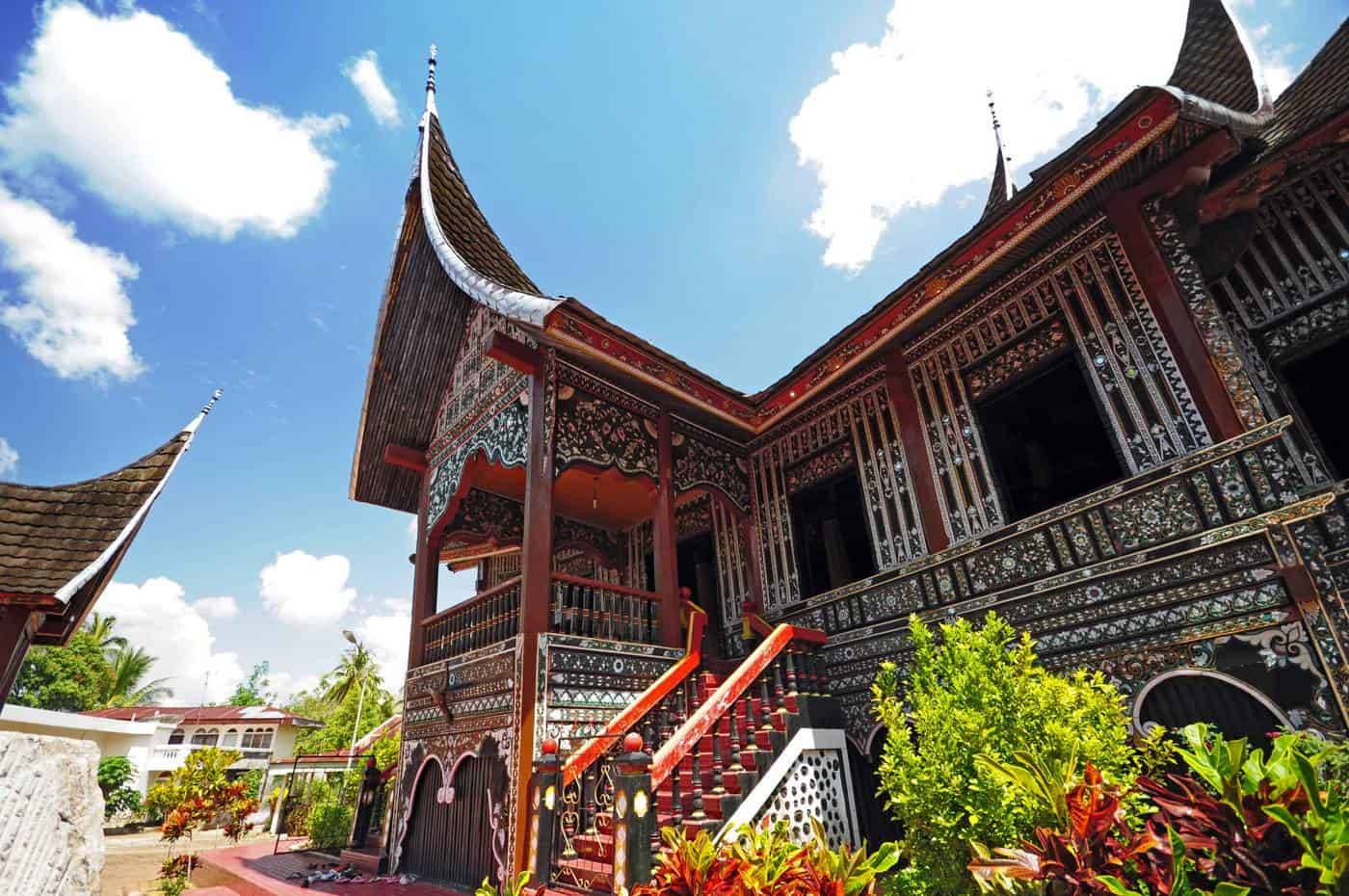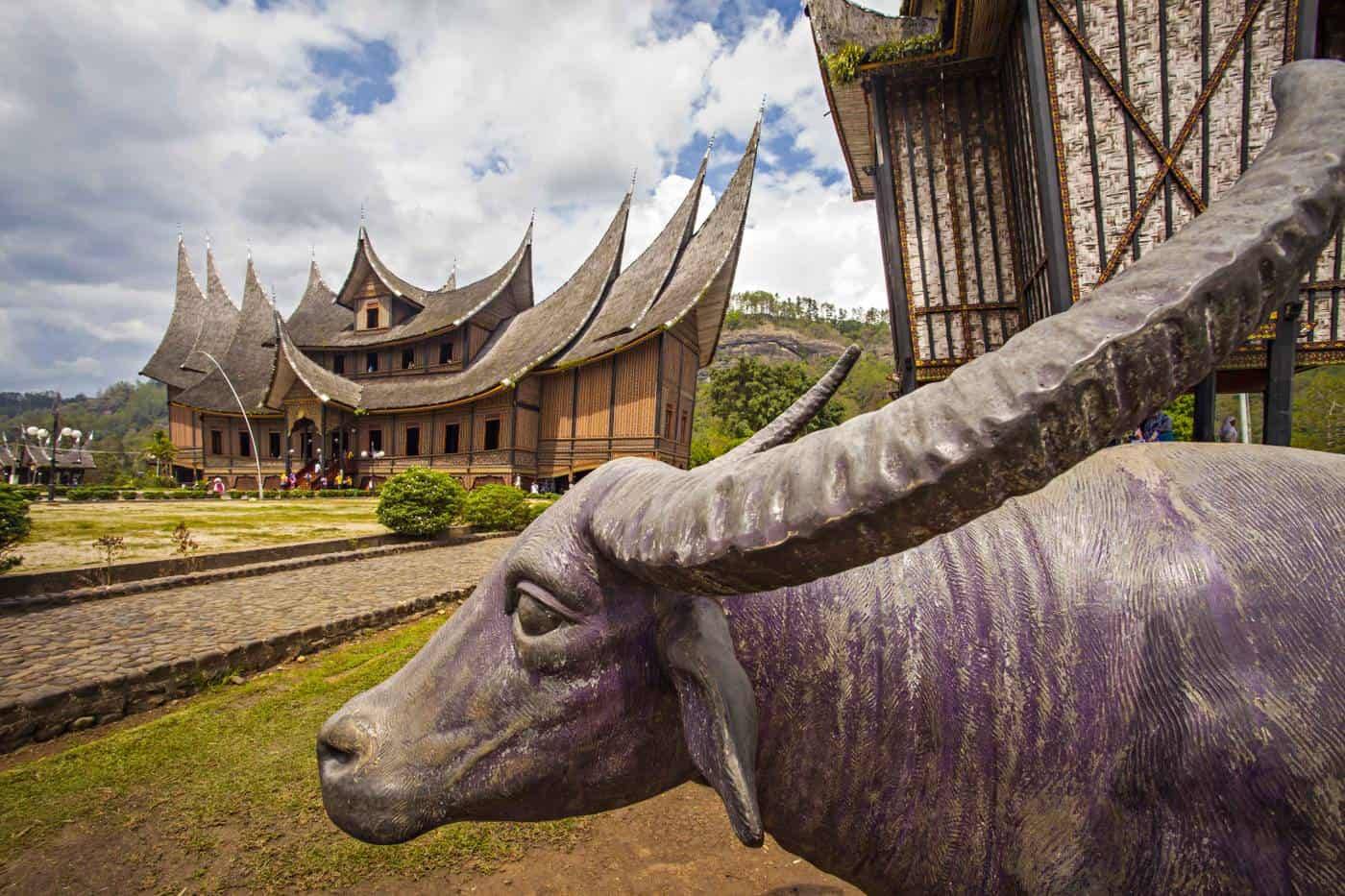
IN THE HIGHLANDS OF WEST SUMATRA – WHERE MATRIARCHATE BEFRIENDED ISLAM
PADANG
The capital of West Sumatra is at the same time Indonesia`s capital of spicy food. Although it is a bustling university city with a hectic lifestyle, the idyllic coastline and unexpectedly, laid-back atmosphere evokes a holiday feel.
Padang is also a place with great history and cultural heritage, not even to mention the famous (very spicy) local cuisine. But more importantly, it is the starting point to the staggering Minang Highlands.
MINANG HIGHLANDS (MINANGKABAU)
Set amid soaring rice terraces and charming villages, the Minang Highland is defined by stunning mountainous landscapes and picturesque scenery.
Apart from the natural beauty, the region is home to the Minangkabau ethnic group and a beguiling travel destination. The cultural heartland and the major tourist hub is the hill-town of Bukittinggi.
The indigenous Minangkabau people make up 85% of the population and present one of Indonesia`s most significant ethnic groups. Their culture has become a point of interest to the anthropology, to find out more about the world`s largest matriarchal society, which, quite unbelievably, at the heart of Sumatra – one of the world`s most conservative Islamic countries – has been flourishing for centuries.
Here, in the Minang Highlands, children take the surnames from their mum and husbands move into their wives` homes. This is the world ruled by a woman.
The Minangkabau is a distinct community with their own language, cuisine (very spicy) and extraordinary architecture. Their famous ‘Rumah Adat’ houses have massive roofs, rising skywards at both ends, to represent the horns of a buffalo.
Set in picturesque countryside, these thatch house-structures with wooden carvings and unique decorations are the tourist highlights.
BUKITTINGGI
Only a few hours away from Padang, some of the most striking natural sceneries can be appreciated in Bukittinggi, also known as “The High Hill”.
Sianok Canyon is the prime reason for all travellers to come. There are several lookouts with breathtaking views of the deep ravine, at the well-known Panorama Park. ‘The Great Wall of Sumatra’ in Koto Gadang will take you through impressive rice fields and gorges. For mind-blowing views, we recommend walking through the ‘Isolated Canyon’ Tabiang Takuruang.
Bukittinggi is a birthplace of the first president of Indonesia – Sukarno and his family house Bung Hatta is open to the public.
The Japanese Caves are also worth a visit. The entrance is at the Panorama Park, and the tour takes you through a network of underground tunnels and bunkers built by the Japanese during the WWII.
Those who love amusement parks should pop in the Jam Gadang – an old clock tower with dazzling markets, great nightlife, food stalls and fun rides.
Bukittinggi is proudly home to the largest market in Sumatra and those who would like some more hustle and bustle need to drive to the nearby market town of Padang Panjang with the Minang Fantasy theme park.
Tanah Datar Regency is famous for Sumatran weaving handicrafts. Pandai Sikek, near Padang Panjang, is a good place to visit for the local Songket – textiles and clothes are hand-woven using a particular technique, and it is quite a spectacle to watch the local ladies making the fabric in a traditional way.
Koto Gandang Village is known for pretty Dutch houses and high-quality silverwork handicraft. Climbers and hikers will want to set out on a thrilling expedition to the most active volcano in Sumatra – Mount Marapi (2,891m), and Mount Singgalang (2,877 m).
Batang Palupuh Conservation Center is a pretty special place where you can see a pretty special plant – the largest individual flower on Earth that grows up to 100 cm across and its name is Rafflesia Arnoldi (flowers between Aug-Dec).
DID YOU KNOW?
The parasitic Rafflesia Arnoldi is also called ‘corpse flower’, for its horrible odour of decaying flesh. The smell of rotting serves to attract insects to pollinate this rare plant. West Sumatra is the only place in the world whit ‘Rafflesia eco-tourism’.
However, environmentalists claim that increased human activity has disturbed bud production at many locations. Today, sadly, Rafflesia is close to extinction. The largest ever recorded rafflesia grew to a diameter of 105 cm.
DANAU MANINJAU
Another jewel of the Minang Highlands is the crater lake of Maninjau. Apart from eco-tourism, visitors can enjoy the tranquil nature, relaxing ambience and magnificent sunsets.
There are also numerous hiking opportunities, amongst which climbing the hill of Puncak Lawang (1210 m) is the favourite, offering a spectacular view over the lake (6-8 hrs return).
HARAU VALLEY
Harau Valley is the West-Sumatran eco-tourism hotspot, encircled by rocky cliffs and fabulous waterfalls. The starting point to the valley is the town of Payakumbuh.
There are numerous traditional villages along the canyon with lovely homesteads and characteristic Minang architecture.
On the way to Harau Valley, stop by at the Balai Kaliki village, Gadang River Tower House and Koto Tua Nan Ampek Mosque.
ANAI VALLEY
Anai Valley provides a popular scenic drive with waterfalls, rivers and springs, and great views can be enjoyed from your car seat.
NOTE During the peak season (Jun-Sep) the road will be busy and less enjoyable, due to easy access from Padang and popularity among the local holidaymakers). There used to be a train running from Padang to Bukittinggi, but it closed down in 2006. Today, you can rent a car or a scooter in Padang and get Padang Panjang via Anai Valley in about 2 hours.
ESSENTIAL EXPERIENCES IN & AROUND BUKITTINGGI
- Sianok Canyon – drive to the Panorama Park and admire the spectacular views from its lookout
- Koto Gadang – trek through the canyon and admire the ‘Great Wall of Sumatra’ and the ‘Isolated Canyon’ at Tabiang Takuruang
- Japanese Caves – explore the underground tunnels and bunkers from the WWII
- Bung Hatta House – pay a visit to the birthplace of the first president of Indonesia
- Jam Gadang – spend a night at the landmark of Padang and enjoy its vibrant ambience while strolling around the largest markets in Sumatra
- Pandai Sigkek – learn more about the indigenous culture and the local hand-weaving techniques of making the fine Songket fabrics
- Batang Palupuh Conservation Center – take a tour to the most accessible place in Sumatra where to see the world`s largest flower Rafflesia Arnoldi
- Mount Marapi (2,891m) & Mount Singgalang (2,877 m) – reach the summit of Mt Marapi or Mt Singgalang before sunrise for the best views (4-5 hrs one-way climb)
- Maninjau Lake – drive the exciting, narrow zig-zag road to reach the lake and explore the traditional villages and their distinct architecture
- Puncak Lawang – hike up to the hill of Puncak Lawang (1210 m) to enjoy the spectacular views over the lake (6-8 hrs return)
- Harau Valley – eco-tourism hotspot, rural setting, homesteads, traditional villages, rice fields, trekking (access from Payakumbuh)
- Anai Valley – if you do not have much time and do not want to miss out on the characteristic scenery of West Sumatra rent a scooter or a car and drive towards Padang Panjang via the popular Anai Valley
SOLOK
While Bukittingi is the gateway to the northern Minangkabau Highlands, the small hill-town of Solok is a great base for all trips in the southern Minang – nestled around the splendid Singkarak Lake.
Perhaps more authentic, Solok is another eco-tourism gem with beautiful tea plantations and picturesque villages to discover. Also here, the Minangkabau culture is the major point of interest.
Visitors will get a chance to see one of the most captivating dancing performances in Indonesia – Tari Piring. The Plate Dance traditionally celebrates the harvest season by the Minangkabau people. The local architecture is at its best around the Singkarak Lake.
DANAU SINGKARAK
The enormous volcanic lake of Singkarak cannot be overlooked. Extending between Padang and Solok, the lake is defined by gorgeous scenery and breathtaking vistas. The rural beauty attracts many outdoor lovers who can enjoy walking in the rice fields, swimming and fishing and cycling around the lake.
There are a few good hikes with lookouts and fabulous sunsets. Remember to try the Bilih Fish in one of the local warungs; the species does not live anywhere else in the world.
BATUSANGKAR
The Pagaruyung Palace near Batusangkar is the centre of the Minangkabau royalty – a palace built in 1804 serves now as a museum.
The villages of Baliambing & Pariangan offer a fantastic collection of vernacular architecture. Here you can see the biggest and oldest surviving traditional Minangkabau house.
The most impressive event in the region is undisputedly Pacu Jawi. The festival has become famous for mud cow racing. The madness of the competitors being dragged through the mud while solely holding onto tails of two running cows – to make them run faster the riders often need to bite the tail – truly is a spectacle.
ESSENTIAL EXPERIENCES IN & AROUND SOLOK
- Singkarak Lake – walk or cycle around the lake and enjoy the local lunch at one of the lakeside warungs – remember to taste the Bilih fish!
- ‘Tari Piring’ Plate Dance – watch the traditional West Sumatran dance art in Solok
- Batusangkar – visit the royal palace of Pagaruyung & the Silinduang Bulan Palace and traditional villages of Baliambing & Pariangan (350-year old traditional Minangkabau house)
- Pacu Jawi – witness the craziest festival ever – Mud Cow Race (regularly held in Tanah Datar Regency, e.g. Batusangar)
- Taman Hutan Raya Bung Hatta – set in mountains, this huge botanical gardens has an excellent collection of native fauna and flora, lovely park with monkeys, panoramic views
- Mount Talang – a volcano surrounded by tea plantations, Lake Talang, the oldest mosque in West Sumatra (Tuo Kayu Jao)
- Danau Diatas & Danau Dibawah – walk around the beautiful twin crater lakes
- Mount Kerinci – climb the highest volcano in Indonesia (3805 m) and take pleasure in the views from atop, overlooking the highest lake in Southeast Asia – Gunung Tujuh (2000 m), Kerinci Seblat National Park is home to Sumatran Tiger
USEFUL TRAVEL TIPS
Religion – Sumatra is strictly a Muslim Realm, and conservative dress is expected at all times, especially women. Female travellers occasionally reported feeling extremely uncomfortable at some places, e.g. tried to be touched by the locals due to their skin colour or bright hair, been subject to loud mockery for their “lack of clothing” and so forth. Be aware of the fact that many residents might have never seen a person of a Caucasian race and are not familiar with the “Western fashion”.
Health – There is a high risk of Malaria in Sumatra, particularly during the rainy season (Dec-Feb). Vaccinations such as Hepatitis A, B and Tetanus are recommended. In some cases, the Yellow Fever Immunisation is required (check with your national health policies).
Transport – The only way how to get around Sumatra is using local public transport/buses (angkot, labi-labi). However, this can often be a gruelling experience – distances are huge, the roads tortuous and the driving hair-raising. On the other hand, it is part of the Sumatran travel adventure. To move around locally, the best way is either to hire an ojek, becak or bendi or rent your own scooter/bicycle (depending on the destination).
WHEN TO TRAVEL
West Sumatra is generally recommended to visit between June and September during the dry season.
HOW TO GET HERE
Fly to Padang (via Jakarta/Singapore/Kuala Lumpur)
To Bukittinggi it is about 2-3 hrs drive by a shuttle bus/car from Padang. Alternatively, you can rent a vehicle or scooter and self-drive.
To Solok it is about 1.5-2 hrs drive by a shuttle bus/car from Padang. Alternatively, you can rent a vehicle or scooter and self-drive.
For all international flights go to www.momondo.com or www.skyscanner.com
For all domestic Indonesian flights check out www.garuda-indonesia.com
